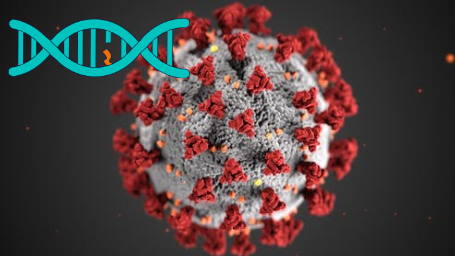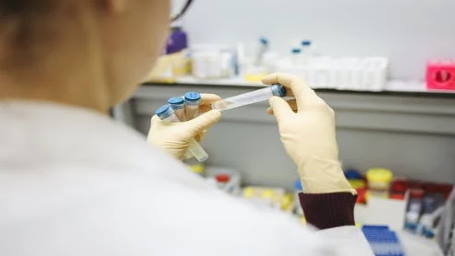Facts & FAQ’s of Coronavirus
Experts have been warning for years that the world is overdue a major disease outbreak, Coronavirus is everywhere and yet invisible! The death rate has been estimated by the WHO to be around 3.4% — though the figure may be high because mild cases are likely underreported. The new virus, officially known as Covid-19, is also more dangerous than the common cold.
The J&J one-dose vaccine was shown to be 72% protective in the United States, 66% protective in South America, and 57% protective in South Africa.
Both the Moderna and the Pfizer vaccines require two shots: a priming dose, followed by a booster shot.
There have been reports of severe allergic reactions to the mRNA vaccines. Both the Pfizer and Moderna vaccines appear, on rare occasions, to trigger anaphylaxis, a severe and potentially life-threatening reaction. People who develop anaphylaxis must be treated with epinephrine — the drug in EpiPens — and may need to be hospitalized to ensure their airways remain open. The CDC says people should be monitored for 15 minutes after getting a Covid-19 shot, and 30 minutes if they have a history of severe allergies.
Pfizer’s shot seems to be more effective for older adults, while Moderna’s may be better at preventing severe cases.
Comparing the Covid-19 vaccines
Which COVID-19 vaccine is best?
“good vaccines” and “bad vaccines.”
| Vaccine | Pfizer | Moderna | Johnson & Johnson |
|---|---|---|---|
| Approved | Yes | Yes | Pending |
| Overall efficacy | 95% | 94.1% | Lower |
| Efficacy 65+ | Same | Lower | |
| Britain Variant | |||
| New York Variant | |||
| South Africa Variant B.1.351 | |||
| Brazil Variant | |||
| Interval between Shots | 21 days | 28 days | |
| Vaccine Type | RNA, or mRNA | RNA, or mRNA | viral vectored vaccine |
| Storage Requirements | cold chain | cold chain | |
| Shipping Temp | -94 Fahrenheit | -4 Fahrenheit | |
| Dosage | 30 micrograms | 100 micrograms |
Coronavirus Mystery: Children Seem Less Susceptible, and Scientists Don’t Know Why
The coronavirus appears to be sparing Kids. Only a handful of children have been diagnosed with the coronavirus. But for the most part, kids do not seem very vulnerable to the virus.

There are two explanations for why so few children have gotten sick:
They have either been less likely to be exposed in the first place, or there’s something different about how their bodies respond to the virus.
Still, when children become infected, they seem less likely to develop severe disease.
The COVID-19 is Mutating, Most mutations are harmless, but every so often, a mutation will improve a virus’s ability to infect people.
New Variants of the Virus that Causes COVID-19
| New York Variant | 526 [referring to B.1.526] All versions of the variant circulating in New York harbor is a mutation called D235G that might reduce the efficacy of neutralizing antibodies. |
| UK Variant | The United Kingdom identified a variant called B.1.1.7 and are 70 percent more transmissible than the original strain. |
| South Africa Variant | called B.1.351, Cases caused by this variant have been reported in the US |
| Brazil Variant | P.1 (or B.1.1.248) lineage, has a potent combination of mutations and reinfection possible |
Confirmed Cases and Deaths by Country, Territory, or Conveyance.
Corona Near Me Best
COVID-19 Dashboard
COVID-19 Coronavirus Outbreak : Live
Worldometers USA
CDC Stats
Weekly Updates by Select Demographic and Geographic Characteristics
Age and sex
Race and Hispanic origin
Place of death
Comorbidities
Excess deaths
State and county data files
What are the common symptoms of COVID-19

The most common symptoms of COVID-19 are fever and dry cough, according to a report from the World Health Organization.
Less common symptoms were fatigue (38.1 percent), coughing up phlegm (33.4 percent), shortness of breath (18.6 percent), sore throat (13.9 percent), headache (13.6 percent), joint pain (14.8 percent), chills (11.4 percent), nausea or vomiting (5 percent), nasal congestion (4.8 percent), diarrhea (3.7 percent), coughing up of blood (.9 percent) and eye discharge (0.8 percent).
The human coronaviruses can remain infectious on inanimate surfaces for up to nine days at room temperature.
The viruses tend to survive the longest in low-temperature, low-humidity environments.
What is SARS-CoV-2? What is COVID-19?
Severe Acute Respiratory Syndrome Coronavirus-2 (SARS-CoV-2) is the name given to the 2019 novel coronavirus.
COVID-19 is the name given to the disease associated with the virus.
SARS-CoV-2 is a new strain of coronavirus that has not been previously identified in humans.
Symptoms are thought to appear between two and 10 days after contracting the virus, but it may be up to 24 days.



